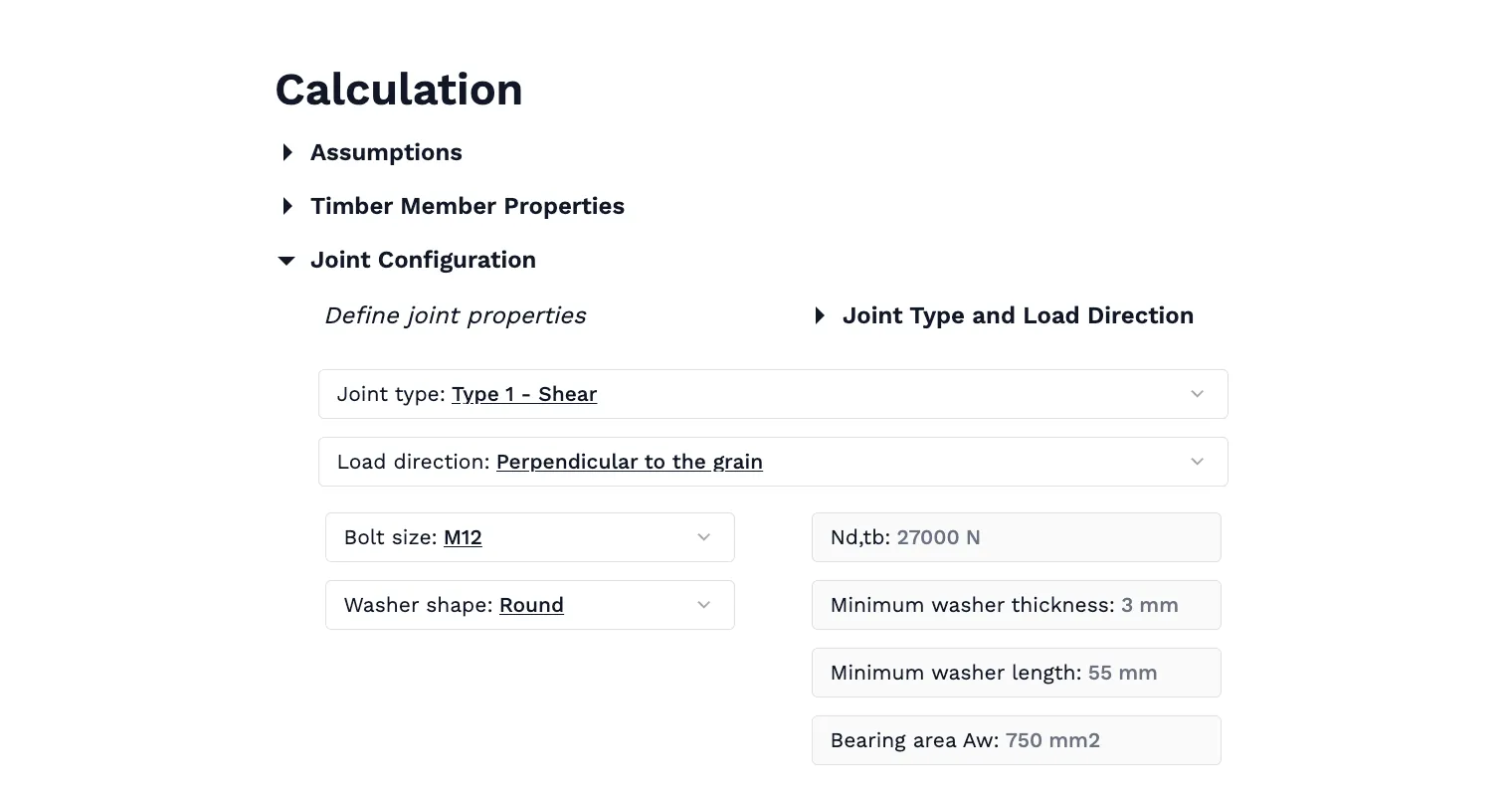Free Timber Bolt Joint Design Tool to AS 1720.1-2010. Step-by-step, engineering-grade tool with downloadable report.

This template is not available yet. You can sign up and create it yourself!
Or let us know if you'd like to be notified when it’s ready:
Get started with your design
The Timber Bolt Joint Design to AS 1720.1-2010 tool provides a streamlined approach to designing bolt joint connections for timber members. This tool evaluates the capacity of bolt joints under applied shear and tension forces, ensuring all calculations comply with AS 1720.1-2010 standards.
This tool is for:
- Structural Engineers: Efficiently design and assess timber bolt joints, optimizing connections for strength and reliability.
- Timber Fabricators: Verify that joint designs meet structural and safety standards, aiding in the fabrication of timber structures.
- Architects: Integrate structurally sound bolt joint designs into timber projects, balancing aesthetics and engineering requirements.
This parametric report offers quick and accurate assessments for bolt joint connections, allowing users to consider material properties, joint geometry, and load requirements with ease. By delivering AS 1720.1-2010-compliant results, this tool supports safe, effective timber design and promotes efficient project workflows.
Engineering templates
Common calculators
Design guides
FAQs
What factors influence the capacity of a timber bolt joint?
The capacity of a timber bolt joint is influenced by factors such as timber density, bolt size and spacing, joint geometry, loading type (shear or tension), and environmental conditions that may affect timber properties over time.
How does wood density impact bolt joint performance?
Higher wood density generally improves bolt grip and joint strength, increasing the joint’s ability to resist applied forces. Conversely, low-density wood may require additional reinforcement or larger bolts to achieve the desired capacity.
How does bolt joint design differ between shear and tension applications?
In shear applications, the bolt resists loads perpendicular to its length, while in tension applications, the bolt resists loads parallel to its length. These distinct loading types require specific design considerations to prevent joint failure.
Learn about the benefits of using CalcTree on engineering projects!





